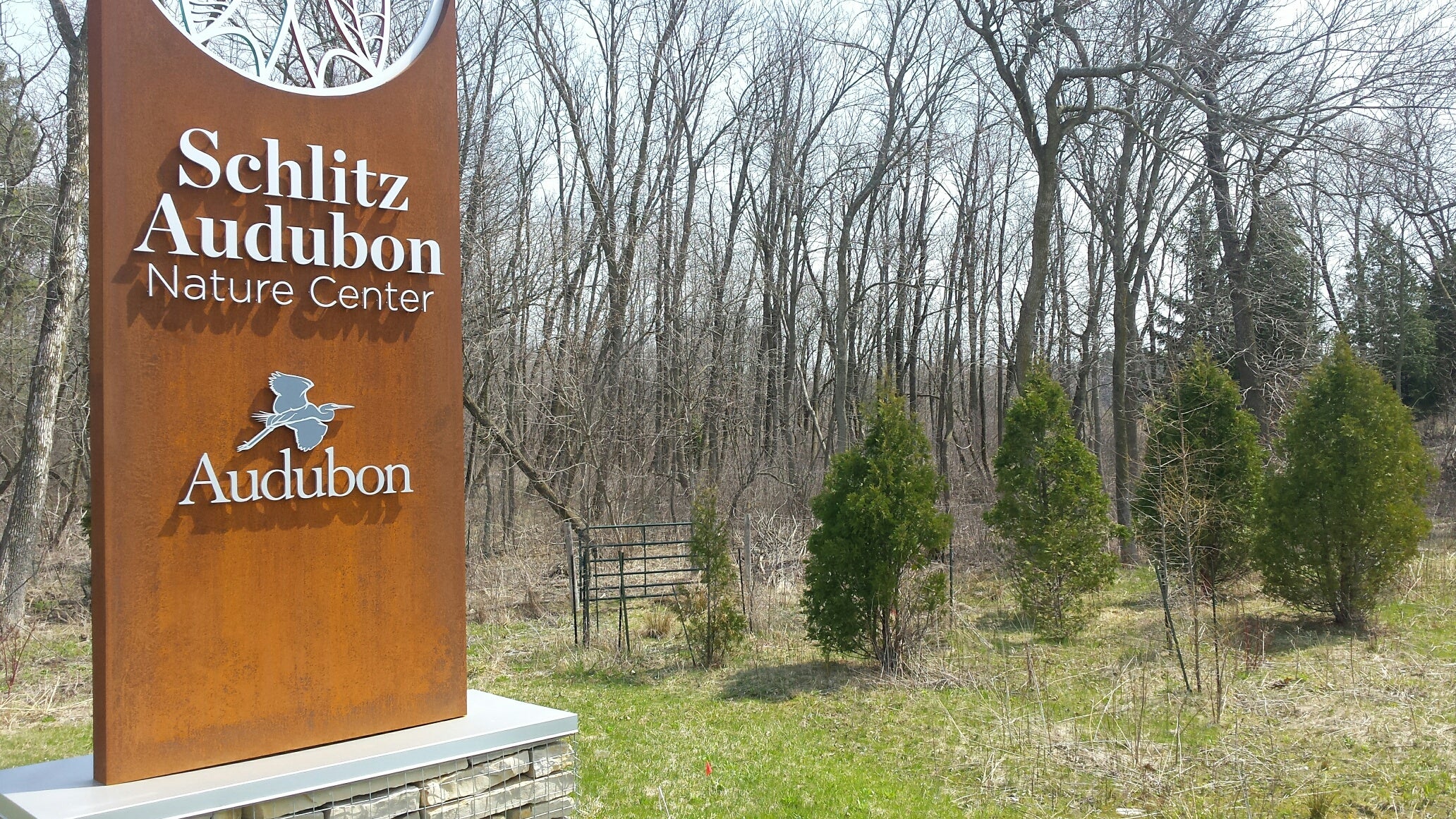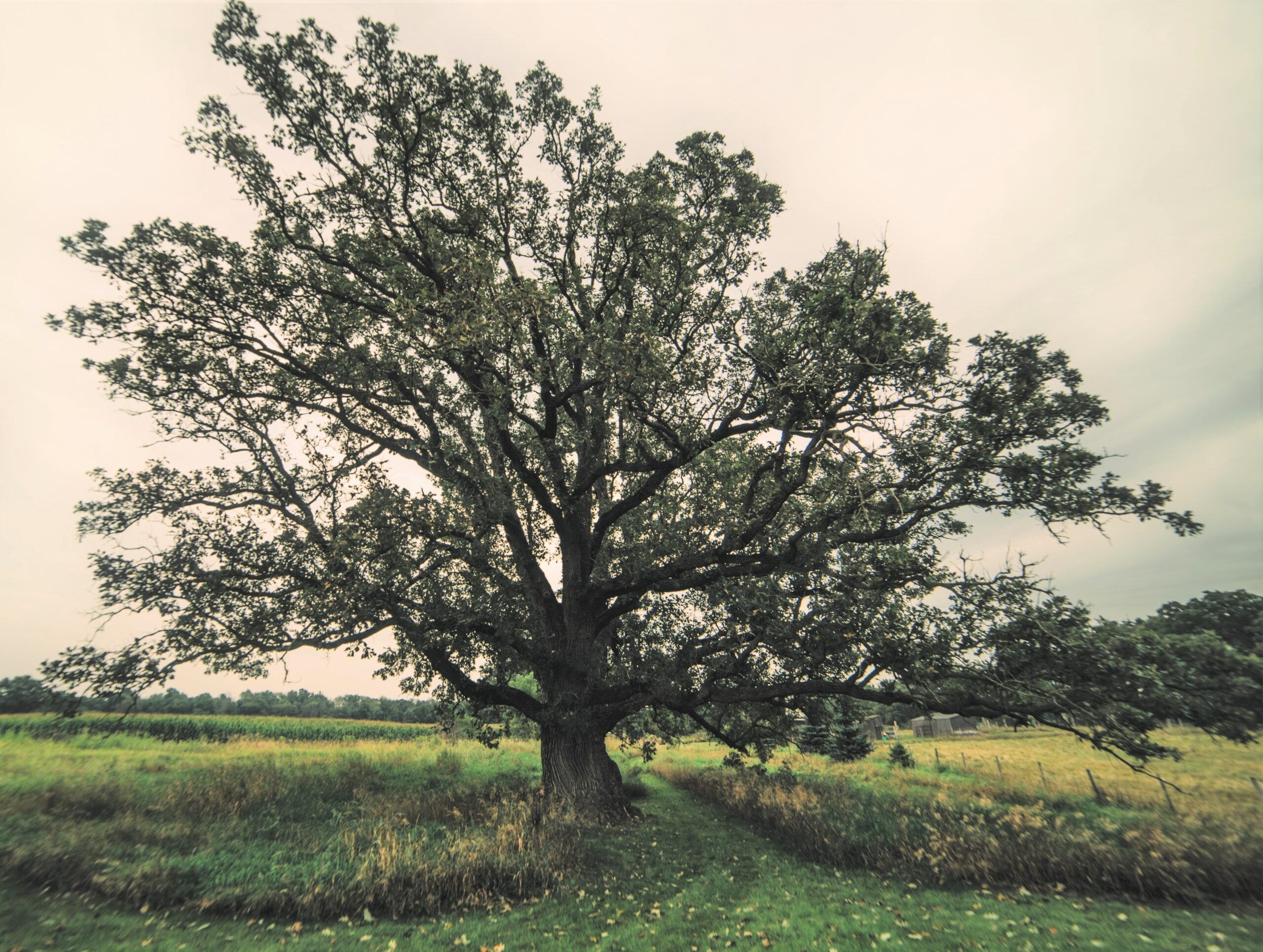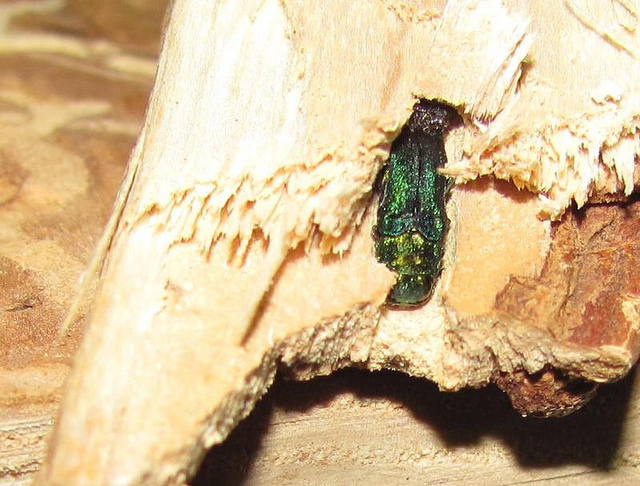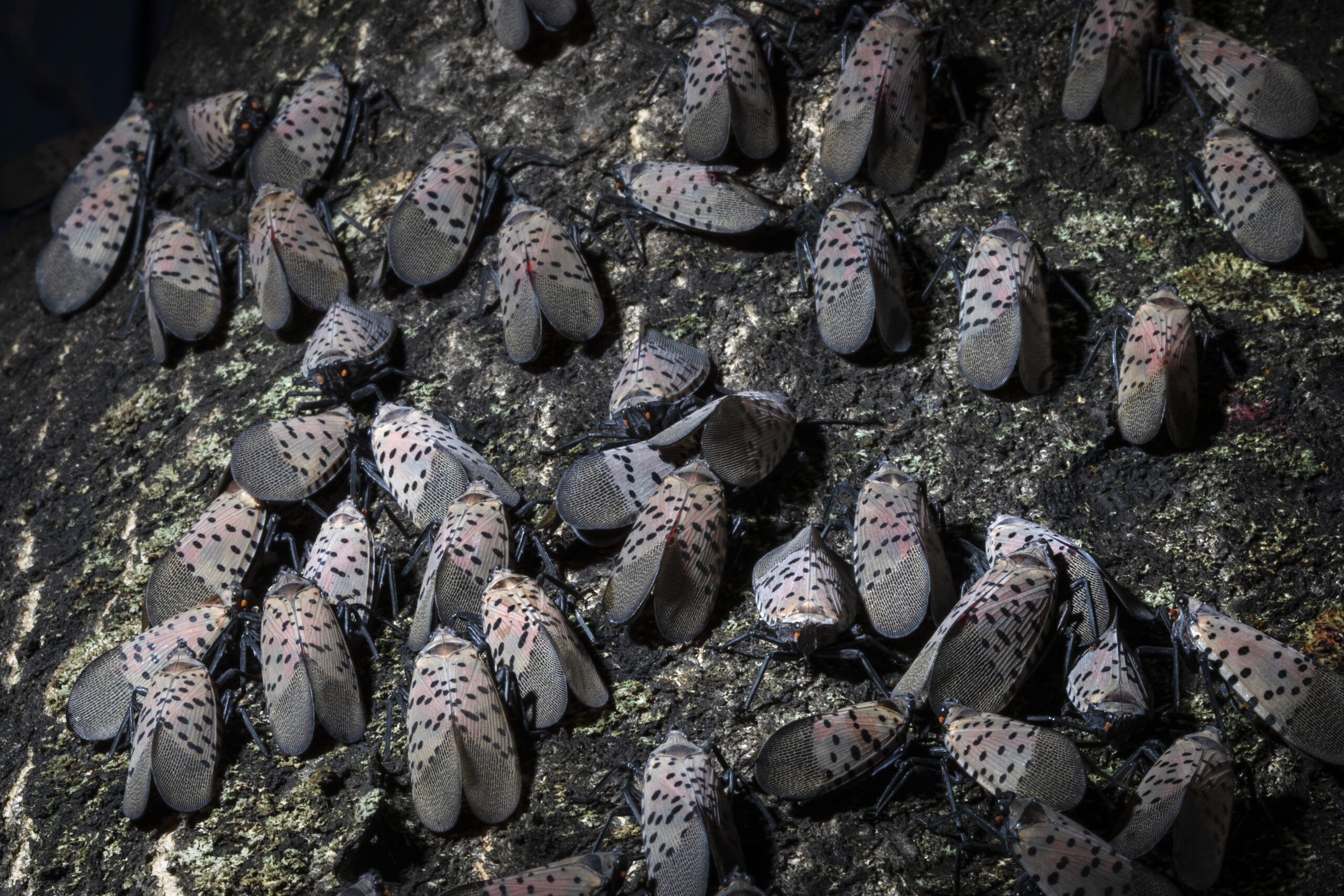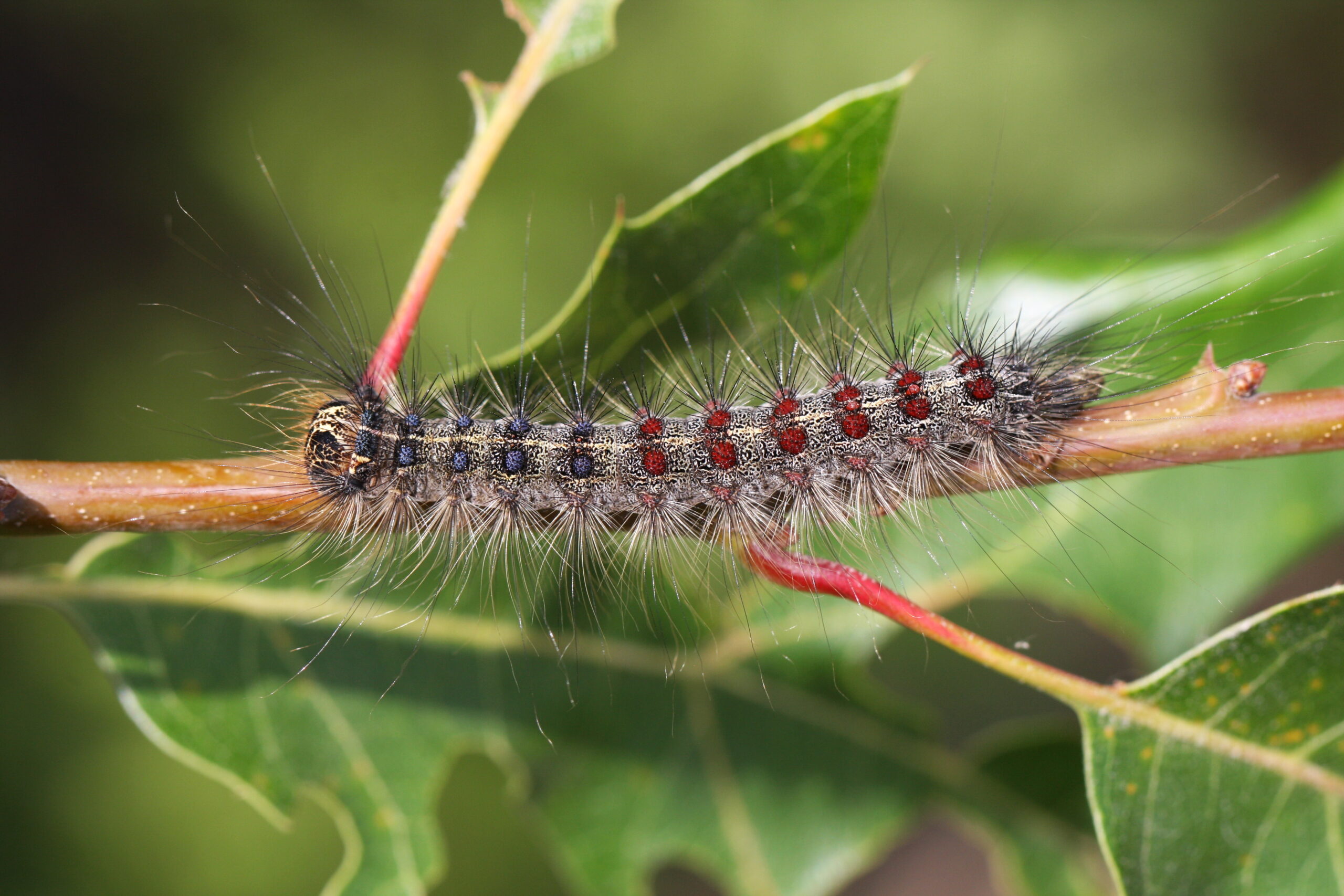On Friday, National Arbor Day school groups and volunteers across Wisconsin planted trees. But even with new saplings taking root, there’s still trouble looming on the forestry front. The emerald ash borer continues to chew its way across Wisconsin and is killing ash trees in about 40 counties. The invasive insect has even made its way into those places of leafy tranquility: nature centers.
For example, the Schlitz Audubon Nature Center in Bayside, just north of Milwaukee, draws 145,000 people each year to its 185 acres of forests, trails and ponds along Lake Michigan. About 35 percent of the tree cover there is ash. But the center’s conservation director, Marc White, said that hasn’t been a problem until about a month ago.

A close-up of an infested tree at Schlitz Audubon. Chuck Quirmbach/WPR
Stay informed on the latest news
Sign up for WPR’s email newsletter.
“We found it here this March, for the first time,” he said.
“It” is the emerald ash borer or, more specifically, the larvae of the insect which gets under the bark of the ash and disrupts the tree’s flow of nutrients. That leads to what’s called girdling, which over the course of a few years leaves a dead tree.
Armed with a hammer and flat-head screwdriver during a recent day at the center, White peeled back some bark on an infested ash to show of near-total girdling.
For safety reasons, he said, Schlitz Audubon will have to take down the tree, along with probably 1,000-2,000 more ash over the next couple of years. The center is going to try to keep alive 150 trees that are in highly erodible bluffs of ravines, by spraying ash borer insecticide on those trees.
White said Schlitz Audubon hopes to replace the dead ash by planting 1,000 to 2,000 trees of other species every year for the next decade. But he put the potential price tag, even with a lot of help from volunteers, at $1.7 million. Steep perhaps, but White said the center has a mission.
“Our goal is to have a refuge for biotic diversity, for people to see what a really high quality native ecosystem should look like so that then they can use that to manage their own land better,” he explained.
Schlitz Audubon is not the first Wisconsin nature center to battle the ash borer beetle.
At the Riveredge Nature Center in Saukville, land manager Matt Smith said the emerald ash borer started killing trees there about a decade ago, some of which have been left in place.

A fallen ash tree at Riveredge is left to naturally decay. Chuck Quirmbach/WPR
Pointing at a tree broken off in mid-trunk, leaning against living trees, he said, “You can see, this is the sort of wild condition that you would want in your woods. Probably every raccoon in this area has crawled up this log and come up into that tree.”
Smith said Riveredge is intentionally leaving alone some dead ash that are not a safety concern. But he says with about 15 percent of the tree cover at Riveredge’s 375 acres having been ash at one point, many trees have been taken out and more will be cut soon. But others, he said, have survived the pest invasion.
“There is some hope. We do see some struggling trees remaining on the landscape after 12 years and what they represent is a genetic stock that is worth saving and trying for breeding trials,” Smith said.
Riveredge is also well into a program to plant other species of trees and Smith said turnover is common in nature.
“Things mature and so as we age, our forests are aging too,” he said. “The oak trees that are in this areas that are released from competition from ash are going to be bigger. There’s a wildness to this area that allows for the healing over of some of those wounds.”
Smith said private landowners who are dealing with the loss of ash in their yard can maybe be inspired by the nature centers, and Arbor Day, to pick diverse and native species to plant.
Wisconsin Public Radio, © Copyright 2024, Board of Regents of the University of Wisconsin System and Wisconsin Educational Communications Board.

